Last-Minute NYC Holiday Gift Guide 🎁
We’ve created a holiday gift guide with presents for the intrepid New Yorker that should arrive just in time—


New York City is no stranger to abandoned buildings. Abandoned hospitals and asylums are some of the most well-worn destinations on the urban explorer path, and the areas just outside of the city are loaded with many institutional buildings that have been left to crumble. When these hospitals were constructed, the commonly accepted theory was that fresh air and sunlight were the best medicine a patient could receive. This encouraged the construction of hospitals outside of the city, where a patient could be properly treated. The further one travels from New York City, forgotten hospitals become a more common sight, left to ruin as the philosophy on healthcare shifted from rural isolation to local care in the last century. Here are 12 abandoned hospitals in the area outside of New York City, and beyond.
In this list, you’ll find stunning images by Long Island-based photographer, author and documentary filmmaker John Lazzaro. Some of the images are featured in his new book, A Vanishing New York: Ruins Across the Empire State. You can see more of John’s work in our virtual series with the photographer in our video archive!
This post contains affiliate links, which means Untapped New York earns a commission. There is no extra cost to you and the commissions earned help support our mission of independent journalism!
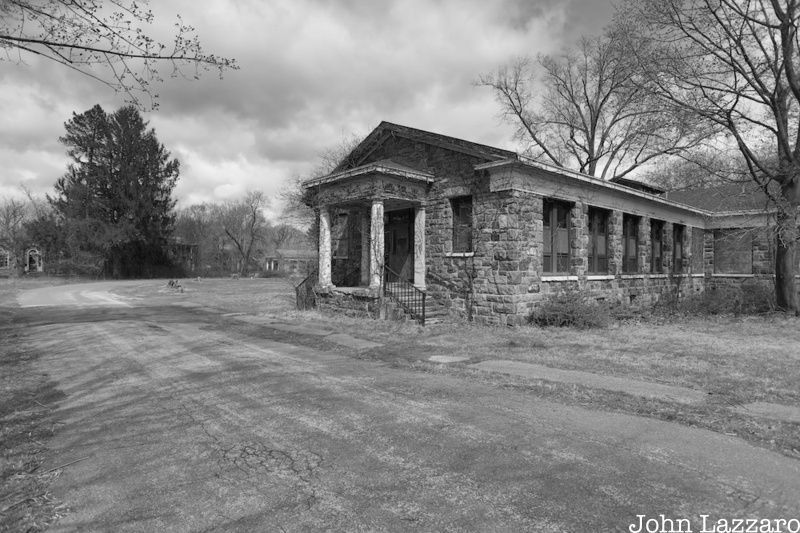
Letchworth Village, unlike most abandoned hospitals, is a place you can visit. Partially. The former institution was built for people with mental and physical disabilities in Haverstraw, New York. Constructed in 1911, the facility was modeled after Thomas Jefferson’s Virginia plantation, Monticello, following the concept that fresh air and sunlight were the best medicine for the mentally ill. The institution’s Thiells facility was the location in which many patients were used as human guinea pigs to test experimental clinical trials. Perhaps the most notable experiments were the trials to test the polio vaccine, which happened to be the first experiments for the vaccine in the world using a human test subject.
Letchworth Village closed in 1996 but remains open to the public as a local park where visitors can walk the grounds and observe the deteriorating buildings. Paths through the grounds are paved and visitors are only allowed on the paved portions, while the buildings themselves are strictly forbidden from entrance due to their poor state.
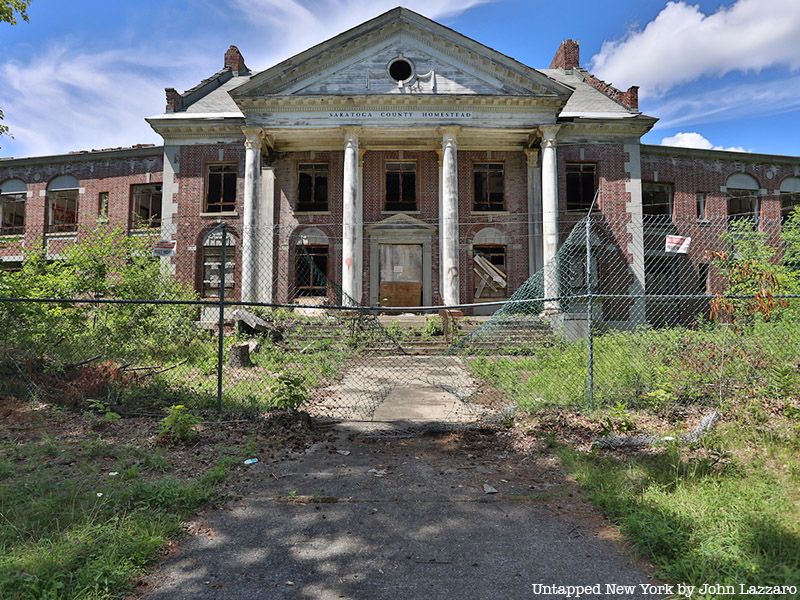
The Saratoga County Homestead Sanatorium off of County Highway 16 in Barkersville, New York has been abandoned since 1973. To get a handle on the tuberculosis crisis which plagued New York at the end of the 19th century into the early 20th century, the state legislature mandated in 1909 that every county must open sanatoriums and hospitals to care for the sick. This site opened in 1914 to offer refuge to those suffering in Saratoga County.
In 1936, the sanitorium got an upgrade. Wooden structures were replaced with brick and embellished with decorative moldings, marble columns, and large windows. Solariums were built to circulate the fresh Adirondack mountain air. Patients at the hospital were under a strict regimen that consisted mostly of resting and a small amount of light exercise. Dancing, alcohol, cigarettes, and even foul language were prohibited.
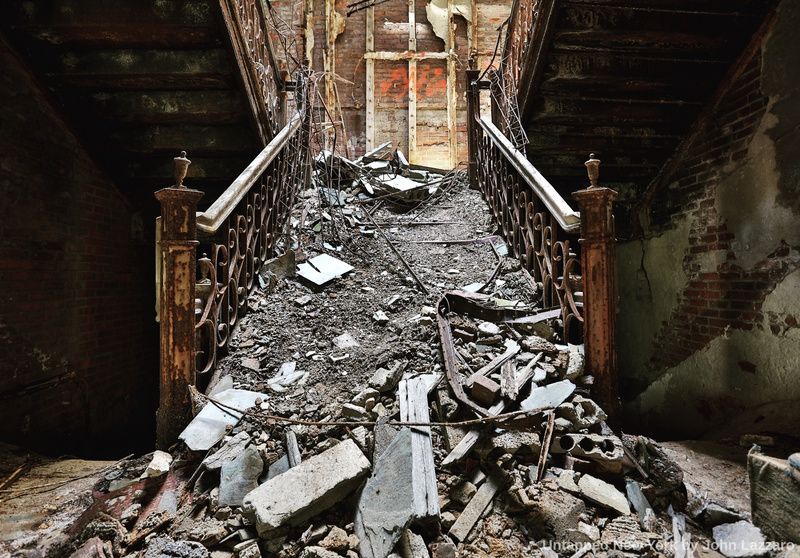
By 1960, the development of antibiotics such as streptomycin led to the phasing out of sanatoriums across the country. Many other tuberculosis hospitals in New York were closing or, like the Neponsit Beach Hospital in Queens which became a nursing home, were being converted for other uses. The last of the tuberculosis patients left Saratoga County Homestead in August of 1960 and the next year it became the Saratoga County Infirmary.
The infirmary treated geriatric patients until 1973 when it closed for good. For nearly half a decade now, the site has been derelict, a victim of vandalism and decay. The 28-acre property was purchased in 2019 but is put up for sale again in June 2022. The current says new buyers can recoup the purchase cost by hosting haunted tours of the abandoned hospital.
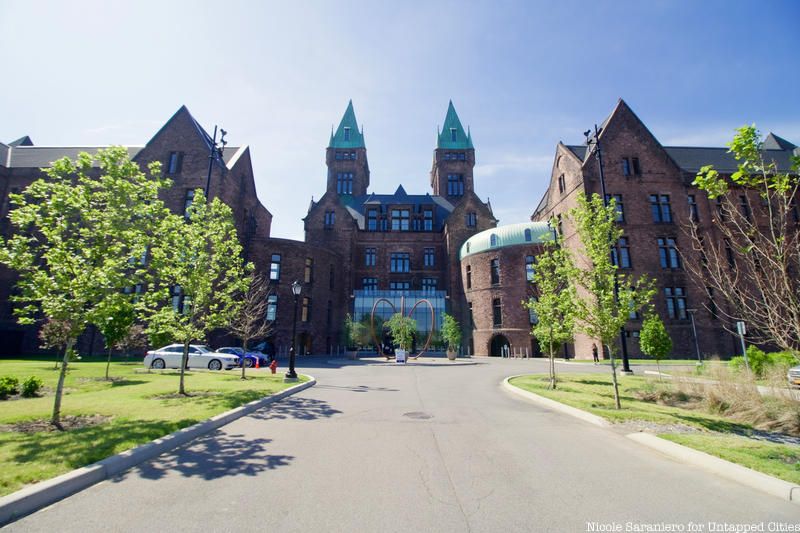
The Buffalo State Asylum for the Insane in Buffalo, New York was designed by renowned architect Henry Hobson Richardson and with 200-acres of grounds designed by landscape architect Frederick Law Olmsted (of Central Park fame). Construction began on the campus in 1872 and it opened in 1880. Employing the Kirkbride Plan, the main structure had an administrative building at the center flanked by two wings – one side for men and one side for women – which were further separated into tiered wards based on conditions and illnesses.
Already by 1927, the asylum started to be used for other purposes. That year, half of the campus was given over to Buffalo State College. The asylum continued to operate through the mid-1970s. By 1975 the site was mostly vacant and only a few administrative personnel remained.
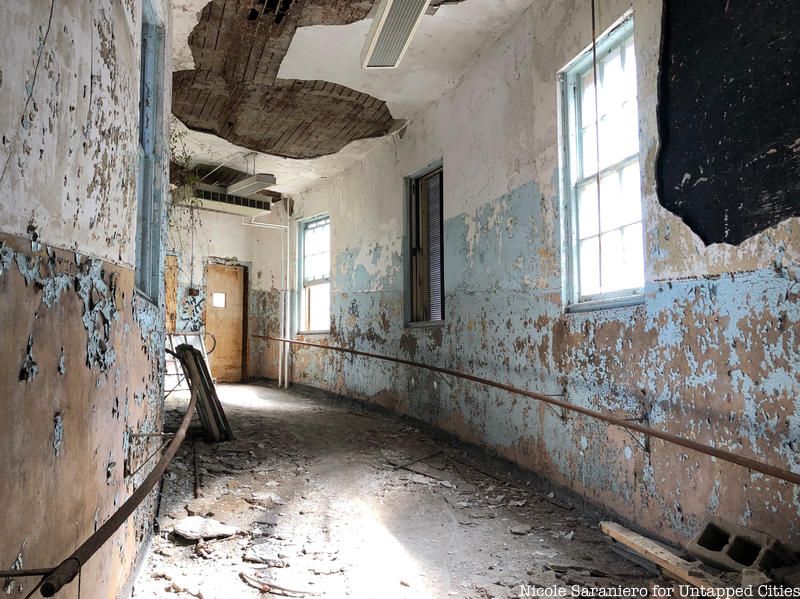
The ominous, pointy-peaked towers of the asylum loomed over the abandoned site for nearly fifty years. Cut down to 42 acres and 13 buildings, the site was given new life through various adaptive-reuse projects. In April 2017, the Tower Building opened as the Hotel Henry Urban Resort and Conference Center. Hotel rooms occupied the amount of space that would equal about two patient rooms. They retained the high ceilings and large windows that were believed to be instrumental in promoting health by letting in lots of natural sunlight and air circulation.
After a brief closure due to the pandemic, the hotel re-opened as The Richardson Hotel. A National Historic Landmark since 1986, many of the buildings are still untouched since the 1970s. In partnership with the Lipsey Architecture Center Buffalo, Preservation Buffalo Niagara offers seasonal hard hat tours of unoccupied spaces.
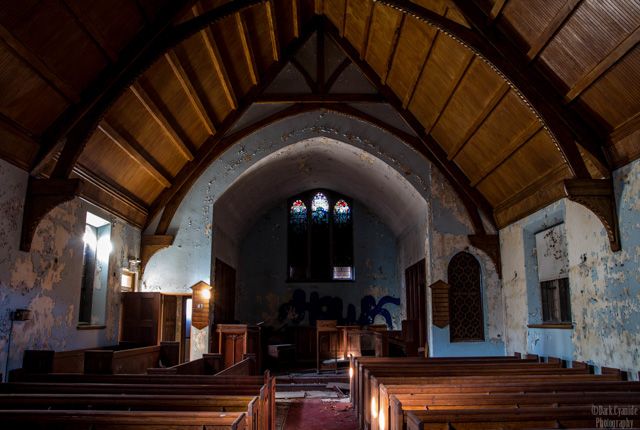
The Hudson River State Hospital, a former state psychiatric hospital in Poughkeepsie, was constructed in 1871 as a part of the Kirkbride Plan. This plan was pioneered by Thomas Story Kirkbride and utilized a new method to treat those with mental health issues. As opposed to being thrown into county jails and prisons, called “Moral Treatment,” the new philosophy called for patients to visit specialized centers for care.
Kirkbride envisioned treatment facilities that were humane, with hospitals that boasted massive buildings where air and light circulation were key to patient treatment. Some of the country’s best architects, including Calvert Vaux and Frederick Law Olmsted, worked with Kirkbride to design the facility. The Hudson River State Hospital was operational from 1871 to 2003 when the 160 acres and countless buildings became too crowded and were forced to close. In 2016, a major development plan dubbed Hudson Heritage broke ground at the site with a bulldozer instead of a shovel. As a result of the development, many of the historic buildings at the abandoned hospital site will come down in exchange for new retail, residential, and hotel spaces. The price tag is believed to be nearly a quarter of a billion dollars and construction is expected to last for eight to ten years.
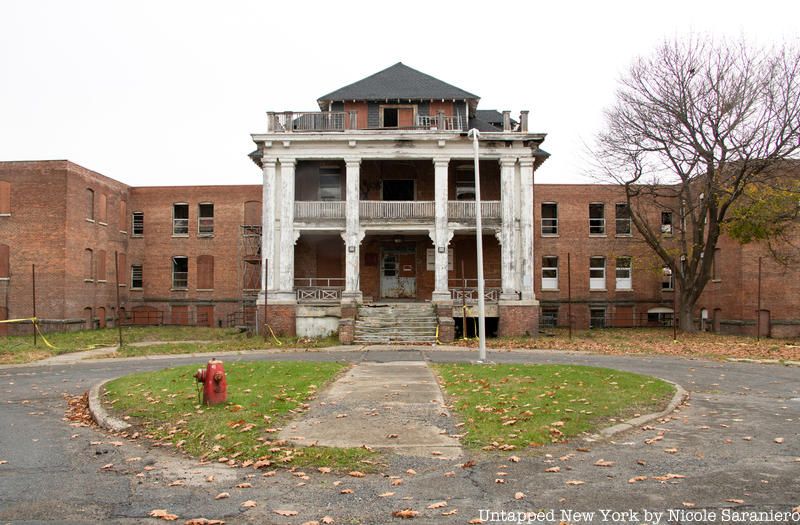
The Middletown State Homeopathic Hospital is located in Middletown, New York. The facility first opened in 1874. At the time of its opening, it was the country’s first purely homeopathic hospital for mental disorders, which meant that the facility was home to many new techniques that were deemed obscure. Patients were treated with art activities, an institutional newsletter written by the patients themselves, strict dietary regiments, and most famously, baseball.
The hospital’s baseball team, the Middletown Asylums, began playing in 1889 and eventually began squared off against some of the region’s best teams, including the New York Giants. Some of the team’s players even went on to play in the majors. The hospital was eventually closed in 2006 and was left abandoned.
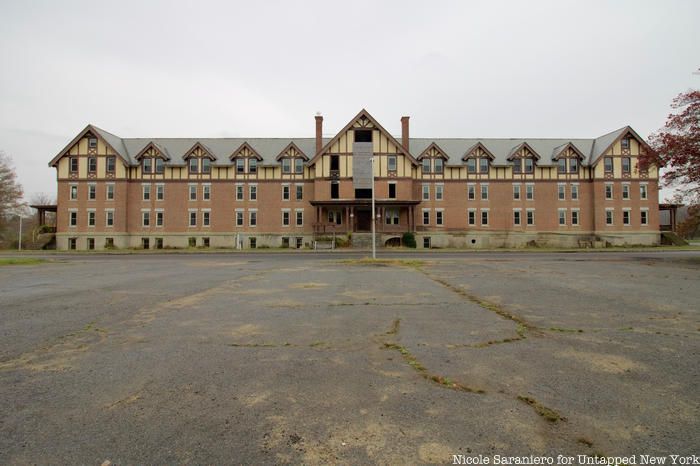
The Main Building of the abandoned hospital from 1874 no longer exists, and many other structures have been lost to fire and demolition. However, many buildings are still standing and being adapted for modern use. The former hospital campus is now home to the headquarters of the Cornell Cooperative Extension and the Fei Tian College and Academy of the Arts while other structures remain neglected.

Kings Park Psychiatric Hospital on Long Island opened its doors in 1885 as a solution to the overcrowding in New York State’s surrounding mental institutions. The 800-acre institution was a self-sustaining facility with farms and railroad spurs to bring in supplies like coal. A majority of the patients were assigned to farming duties to encourage their exposure to fresh air and because it was believed to be a therapeutic exercise.
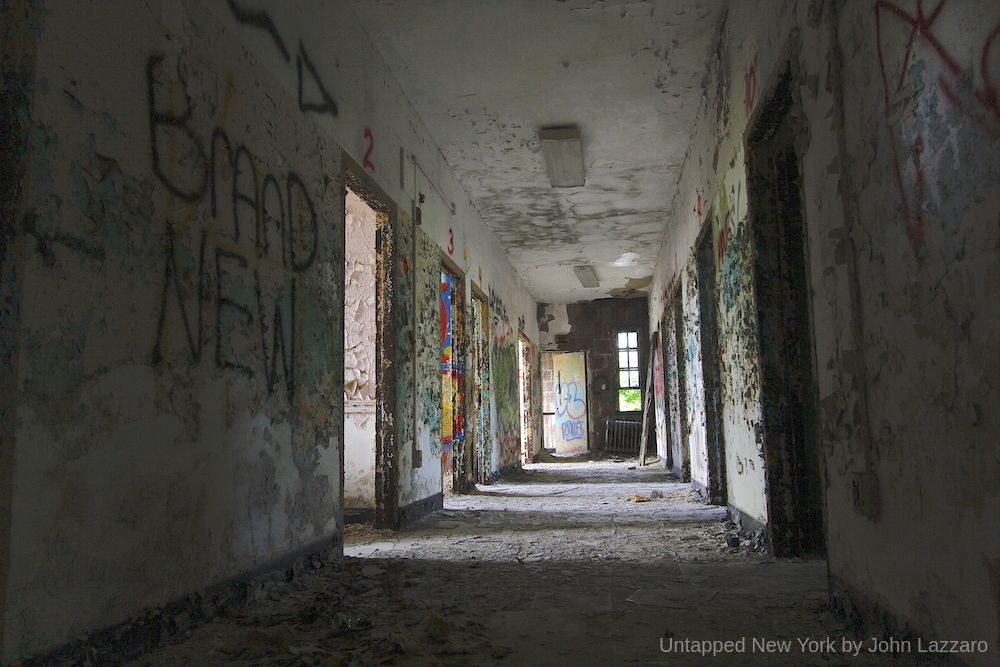
As the facility kept expanding, eventually reaching a size large enough to provide its own heat and electricity, the population increased as well, causing overcrowding throughout the 1950s before the patient population steadily decreased. The hospital closed its doors permanently in 1996, but like Letchworth Village, a portion of the grounds remain available to the public to explore as a county park while the buildings are strictly off-limits.
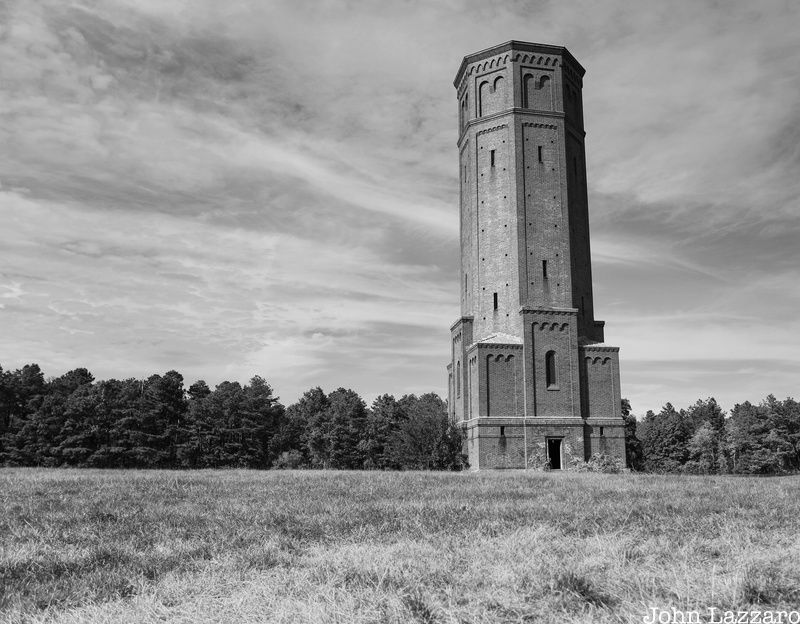
The Pilgrim State Psychiatric Center opened in 1931 in West Brentwood, Long Island. It was named not for America’s early settlers, but for Dr. Charles W. Pilgrim, the New York Commissioner of Mental Health in the early 1900s. Like Kings Park Psychiatric Center, the facility was built as a solution to desaturate the region’s overcrowded institutions. The facility steadily grew throughout its heyday, essentially becoming its own little town. The institution had its own police department, fire department, court, power plant, and its own Long Island Railroad station, among other features.
The Pilgrim State Psychiatric Center remains operational today, yet drastically smaller than it once was. Much of the land has been sold and converted for other uses, while some of the buildings have remained intact but abandoned.
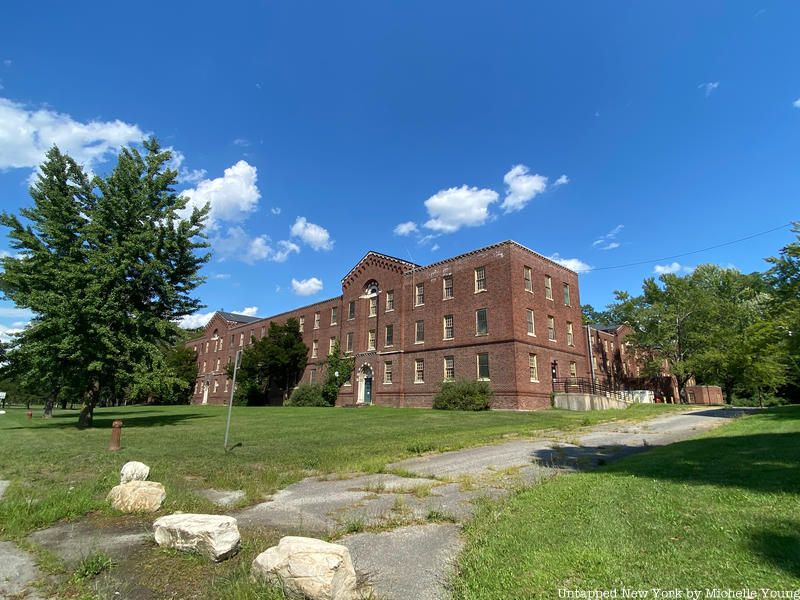
Harlem Valley Psychiatric Center once had its own stop on the Metro-North. The stop still exists, though instead of being called the Harlem Valley-State Hospital station, it’s now the Harlem Valley-Wingdale station. The Center opened in 1924 in Duchess County, about 70 miles north of Manhattan, as the Harlem Valley State Hospital. The nearly 900-acre property was largely self-sufficient. It boasted its own power plant, dairy farm (complete with an ice cream parlor), bakery, bowling alley, chapel, and cemetery. There was even a golf course for the doctors that was designed by golfer and course designer Donald Ross. “Well-behaved patients” reportedly were asked to serve as caddies.
The end came for Harlem Valley in 1994 when, like many other aging facilities of the time, new drugs and modern approaches to psychology made it obsolete. The site sat abandoned for twenty years before it was purchased by the current owner. Olivet University, an evangelical organization from California with a controversial reputation, founded by Korean pastor David Jang bought 503 acres of the former campus for $20 million. Untapped New York visited in 2020, the campus was partially renovated, with many areas still clearly abandoned.
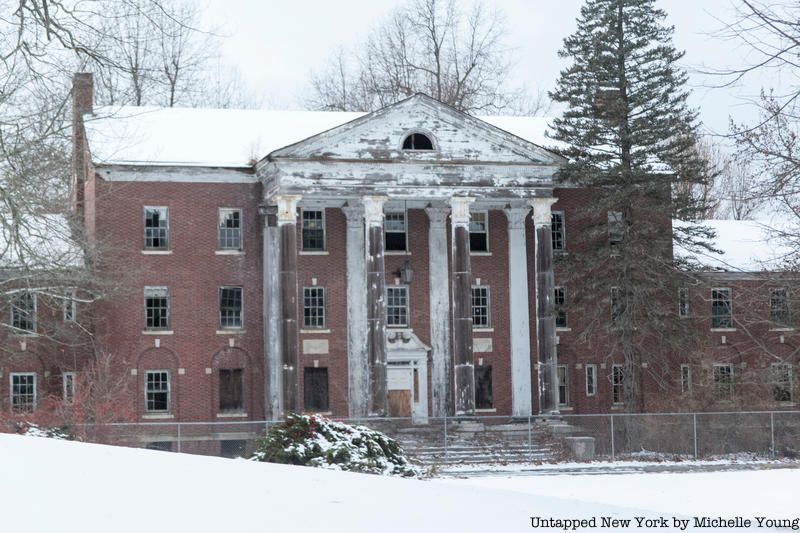
The Fairfield Hills State Hospital campus is crossed with a network of underground tunnels that connect the various buildings spread out over 770 acres. Opened in Newtown, Connecticut in 1931 to help alleviate some of the state’s overpopulation issues in its other mental institutions, the campus consists of 16 buildings. The tunnels were mainly used to transport patients between treatments and laboratories, confinement rooms, operating rooms, and in unfortunate cases, the morgue. At its peak, the hospital could hold 4,000 patients. The patient-to-doctor ratio had always been an issue with the facility.
The grounds were partially redeveloped in 2009, long after its closing in 1995. Some of the buildings are being used as offices or for commercial use, but many remain untouched since their last residents were moved to other facilities. Open to the public, exploration of the grounds is highly encouraged, although any vacant buildings are off-limits.
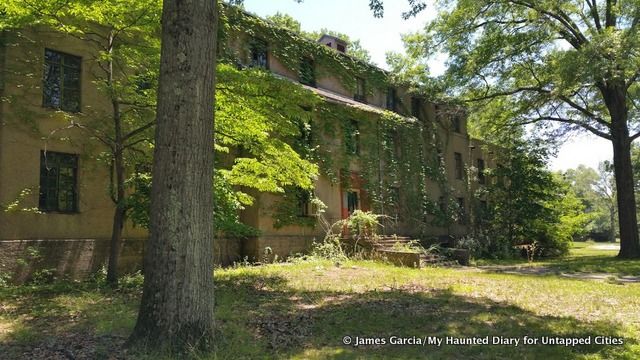
The Rockland Psychiatric Center opened in 1931 in Orangeburg, New York, and is one of the only locations on this list that is still partially being used as it was initially intended. But like many psychiatric centers in the 20th century, the facility began to decline as it turned to more controversial treatment methods.
Today, Rockland Psychiatric Center still operates in a portion of the complex’s newer buildings, while its older structures remain abandoned and continue to age. The inhabited portion holds approximately 400 beds and is home to patients with psychiatric illnesses. The facility has become a pop culture celebrity because some of the buildings have been used as a primary shooting location for the Netflix television show Orange is the New Black and it was the setting of the second season of Ryan Murphy’s American Horror Story: Asylum.
The Trenton Psychiatric Hospital was founded in 1848 by Dorothea Lynde Dix, a pioneer in the advancement of mental institutions. The facility was New Jersey’s first public mental hospital. Like many of the psychiatric hospitals of the time, treatment practices eventually took a dark turn. In 1907, Dr. Henry Cotton began his successful tenure as the medical director of the facility, but in 1913 he developed some disturbing treatment theories. Dr. Cotton believed that mental illness was caused by infections within the body after discovering that an untreated case of syphilis could cause such disorders. He began to have his staff remove limbs and teeth to “treat” his patients, and consistently used surgery as a “cure.” These practices continued into the 1960s even after Cotton’s death in 1933.
Today, portions of the facility are still active as a psychiatric hospital, yet some of the older buildings are abandoned and strictly off-limits to the public. Nobel prize-winning mathematician John Forbes Nash was once a patient at Trenton Psychiatric Hospital in 1961.
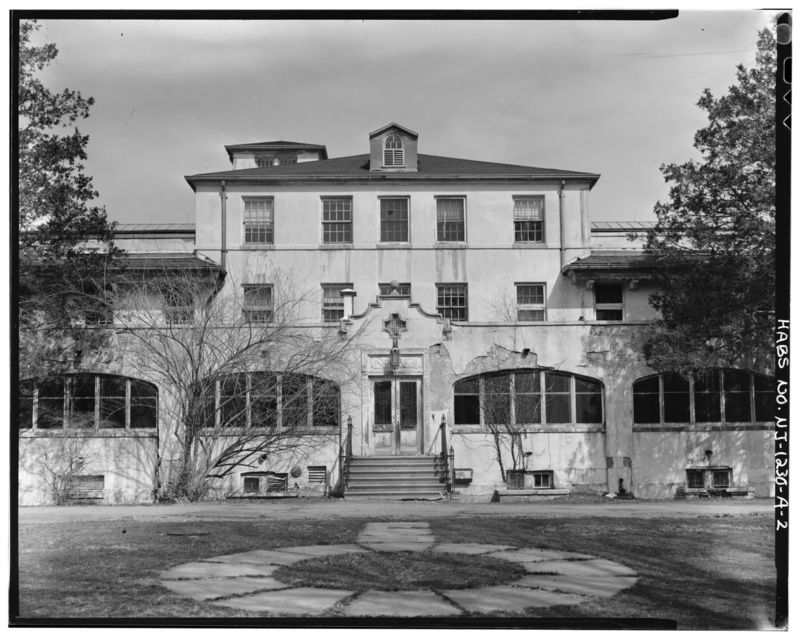
New Jersey opened its first and only state-owned and operated sanitarium in 1907. The Hagedorn Psychiatric Hospital is located at the end of a mountain road named Sanatorium Road in Glen Gardner, New Jersey. The facility was fairly ahead of its time regarding treatments, as it kept its methods long into the 1950s while some sanatoriums around the country gradually shifted their treatments to fit the new standards of psychiatric hospitals that included updated medications.
The hospital broadened the list of diseases it was suitable to treat in 1950 but was ultimately shut down in the late 1970s. It was next to this abandoned hospital that Hagedorn was built, initially as a state nursing home but eventually shifting to a psychiatric hospital. Although the buildings were separated, Hagedorn Psychiatric Hospital was really only an extension of the former abandoned hospital next door. Ultimately, Hagedorn was closed in 2011 to cut spending.
Edgewood State Hospital in Deer Park, Long Island functioned as both a psychiatric facility and a tuberculosis hospital just west of Pilgrim State Hospital and while it was demolished in the 1980s, small traces of it can still be found today. It also served as a treatment center for traumatized soldiers during World War II under the name Mason General. A government-sponsored documentary called Let There Be Light, which called attention to the struggles of veterans returning from war, was partially filmed there. The film was suppressed by the United States government for thirty years before it was finally screened at Cannes Film Festival in 1981. It has since been preserved by the Library of Congress and can be viewed on Amazon.
The large imposing main building of Edgewood was constantly on fire. It became a popular urban exploration spot for youth in the 1970s and 80s. An old, grainy video from 1986 shows what was left before the abandoned hospital was demolished in 1989. When the building was demolished, it was reportedly the largest demolition of state-owned property ever. Today, small remnants of Edgewood can be found scattered throughout the oak-brush plains preserve managed by the New York State Department of Environmental Conservation. This plan can only be accessed with a permit. Remnants that have been found include rail tracks, lampposts, and fire hydrants.
Next, read about 10 of NYC’s Abandoned Hospitals and Asylums and 10 Abandoned Places to Discover in Manhattan
Get in touch with the author on Instagram @mjohnathonrich. This article was updated in 2024 by Nicole Saraniero.
Subscribe to our newsletter